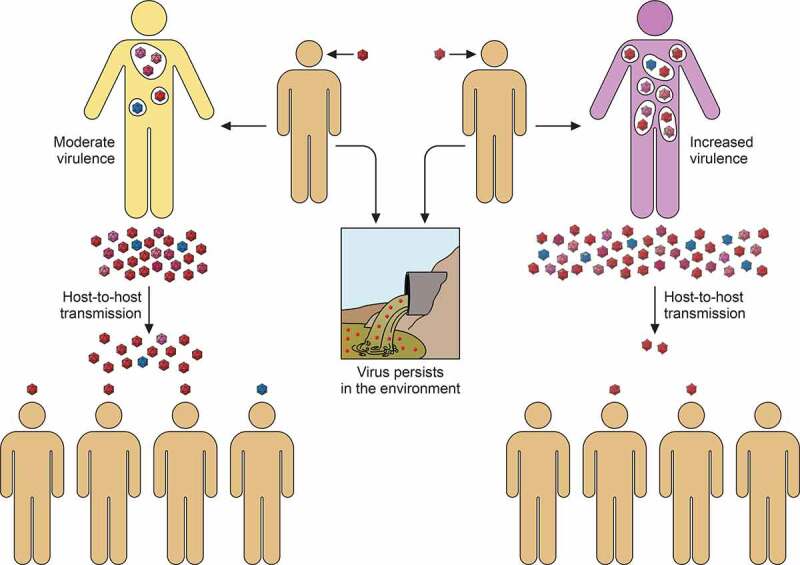Figure 3.

Virulence-transmission trade-off in the context of the HAV singularity. Left cartoon. HAV is transmitted through the fecal-oral route. During the host-to-host transmission, the virions shed in feces may persist for long periods in the environment. The high stability of the naked particles is achieved by the folding acquired through the codon usage-driven slow translation, which in combination with a very inefficient IRES results in low replication. The low virus production and the limited IFN response ends up in a moderate virulence (yellow body). Right cartoon. Changes inducing a faster replication, for instance through epistatic mutations increasing the IRES activity and optimizing the codon composition, may alter the silent dynamics of the HAV cycle increasing its virulence (purple body), and decreasing its host-to-host transmission despite a higher virus production
